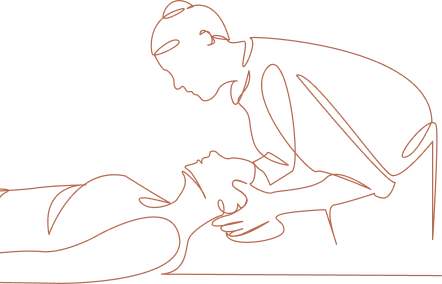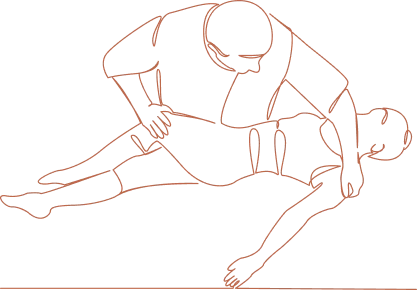Don't let a hernia hold you back. Continental Hospitals offers cutting-edge hernia repair options for faster recovery & minimal discomfort. Get back to life pain-free!

A hernia is a condition in which an organ or tissue protrudes through a weakened muscle or tissue wall. Hernias can occur anywhere in the body, but they are most common in the abdomen and groin.
Consectetur adipiscing elit. Ut elit tellus.
Consectetur adipiscing elit. Ut elit tellus.


Continental Hospital has the best hernia surgeons renowned for their precision and exceptional patient care, delivering top-tier hernia treatments with skill and compassion.
Hernia surgery costs in Hyderabad typically range from 70,000 to 90,000 rupees, varying based on the hospital, surgeon, and specific procedure required. Prices may fluctuate depending on individual medical circumstances and additional services provided.
Continental Hospitals offers round-the-clock medical services, providing constant care and support to meet your healthcare needs anytime, day or night.
Laparoscopic surgery is less invasive and painful than open surgery, and it has a shorter recovery time. However, it is not suitable for all hernias.
Other treatments for hernia:
In some cases, a hernia may be treated without surgery. For example, small umbilical hernias in babies may close on their own. Some adults with small hernias may be able to wear a truss, which is a supportive device that helps to keep the hernia in place.



What We Do




The use of robotic technology in surgery allows for enhanced precision, dexterity, and visualization, which can be advantageous in certain cases. Here are some key points about robotic hernia repair:
Robotic System: The da Vinci Surgical System is one of the most widely used robotic surgical platforms. It consists of a console where the surgeon sits, controlling the robotic arms, which are equipped with specialized surgical instruments. The robotic arms are inserted into the patient through small incisions.
Procedure: In robotic hernia repair, small incisions are made near the hernia site, and the robotic arms, with attached instruments and a camera, are inserted. The surgeon then manipulates the robotic arms from the console, guiding the instruments to perform the repair. The 3D camera provides high-definition, magnified images of the surgical site, allowing for precise and detailed work.


A strangulated hernia is a medical emergency that occurs when the blood supply to the tissue trapped in a hernia is cut off. This can happen when the tissue becomes trapped in a small opening in the abdominal muscle and the muscle squeezes down on the tissue. Strangulated hernias can be very painful and can lead to serious complications, including gangrene (tissue death) and sepsis (a life-threatening infection). Strangulated hernias can occur anywhere in the abdomen, but they are most common in the groin (inguinal hernias) and around the belly button (umbilical hernias). They can occur at any age, but they are more common in older adults and in people with certain medical conditions, such as chronic coughing or constipation.
An inguinal hernia is a bulge in the groin region. It occurs when a portion of the intestine or other tissue pushes through a weakened area of the abdominal wall. Inguinal hernias are most common in men, but they can also occur in women and children
An inguinal hernia is typically diagnosed during a physical examination. Your doctor will feel for a bulge in the groin region and ask you to cough or stand to increase the pressure in your abdomen. If your doctor suspects an inguinal hernia, they may order additional tests, such as an ultrasound or CT scan. The risks of inguinal hernia surgery are relatively low. However, all surgery carries some risk, such as infection, bleeding, and pain. Most people make a full recovery from inguinal hernia surgery within a few weeks. However, it is important to follow your doctor's instructions for care at home to prevent complications.
A femoral hernia is a type of hernia that occurs in the groin area. Hernias happen when an organ or tissue pushes through a weak spot or opening in the surrounding muscle or connective tissue. In the case of a femoral hernia, a portion of the intestine or other abdominal contents protrudes through the femoral canal, a passageway near the groin.
Symptoms of femoral hernia


In Hyderabad, the cost for hernia surgery can range from around ₹25,000 to ₹1,00,000 or more, depending on the aforementioned factors. However, these figures are approximate and can significantly differ based on individual circumstances. The cost of hernia surgery in Hyderabad, or anywhere else for that matter, can vary widely based on several factors such as the type of hernia, the hospital or healthcare facility chosen, the surgeon's fees, the complexity of the procedure, any additional tests or consultations required, and whether the patient has insurance coverage.
Common types include inguinal hernias (in the groin), hiatal hernias (in the upper stomach), umbilical hernias (around the navel), and incisional hernias (at the site of a previous surgery).
Most often, surgery is recommended to repair a hernia, especially if it's causing symptoms or complications. Surgery involves pushing the herniated tissue back into place and reinforcing the weakened area with sutures or mesh.
While hernia surgery is generally safe, risks might include infection, recurrence of the hernia, chronic pain, damage to surrounding tissues or nerves, and complications related to anesthesia.
Recovery varies depending on the type of surgery performed and individual health factors. In general, people can return to light activities within a few weeks, but it might take several weeks to a few months to fully recover and resume normal activities.
It's advisable to consult a doctor if you notice a new or enlarging bulge, experience severe pain or discomfort around the hernia, or if the hernia is causing symptoms like vomiting or constipation.
The main types of hernia surgery include open hernia repair, laparoscopic hernia repair, and robotic-assisted hernia repair. These procedures involve either traditional incisions, minimally invasive techniques using small instruments and a camera, or robotic technology for repair.